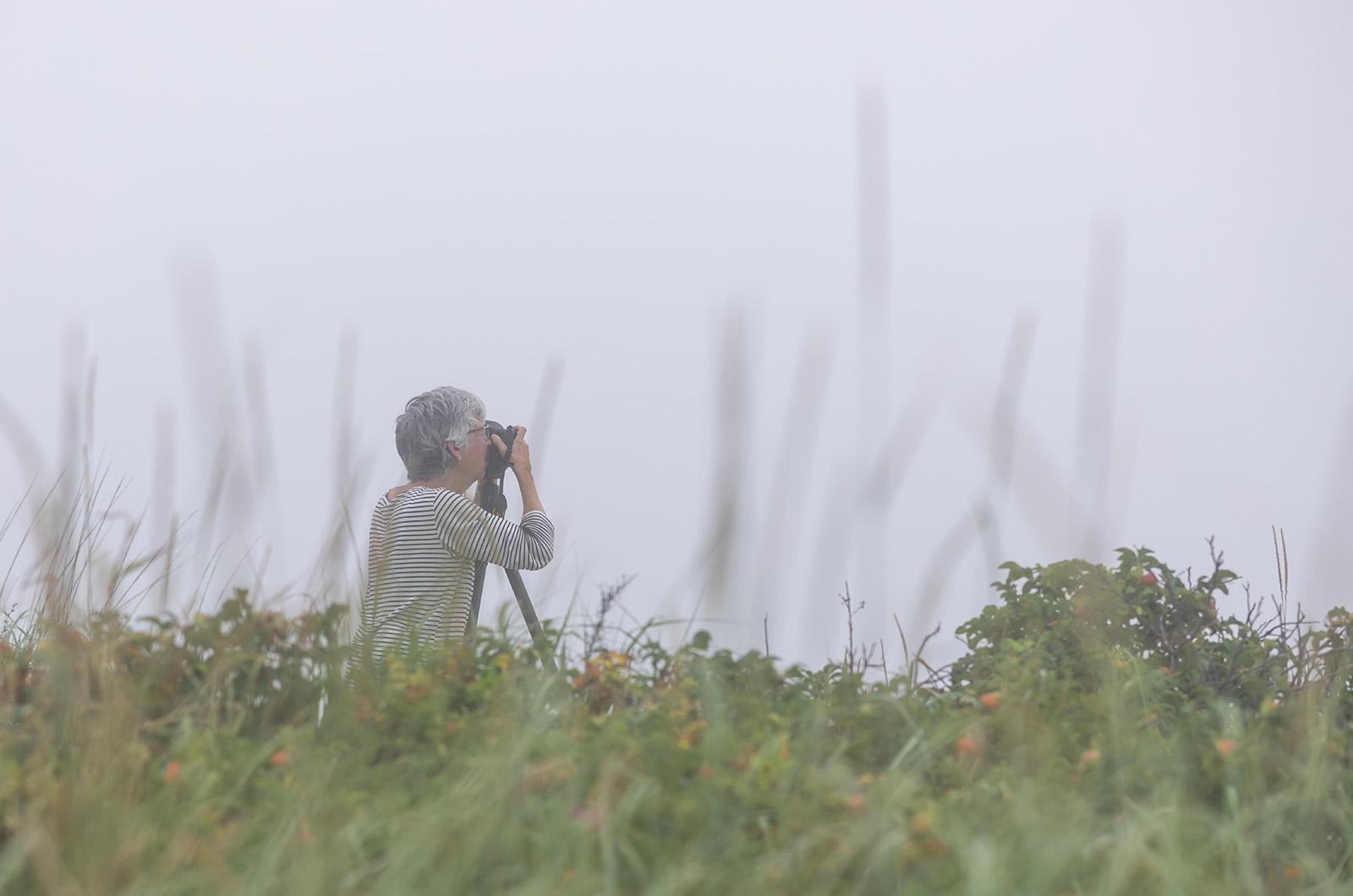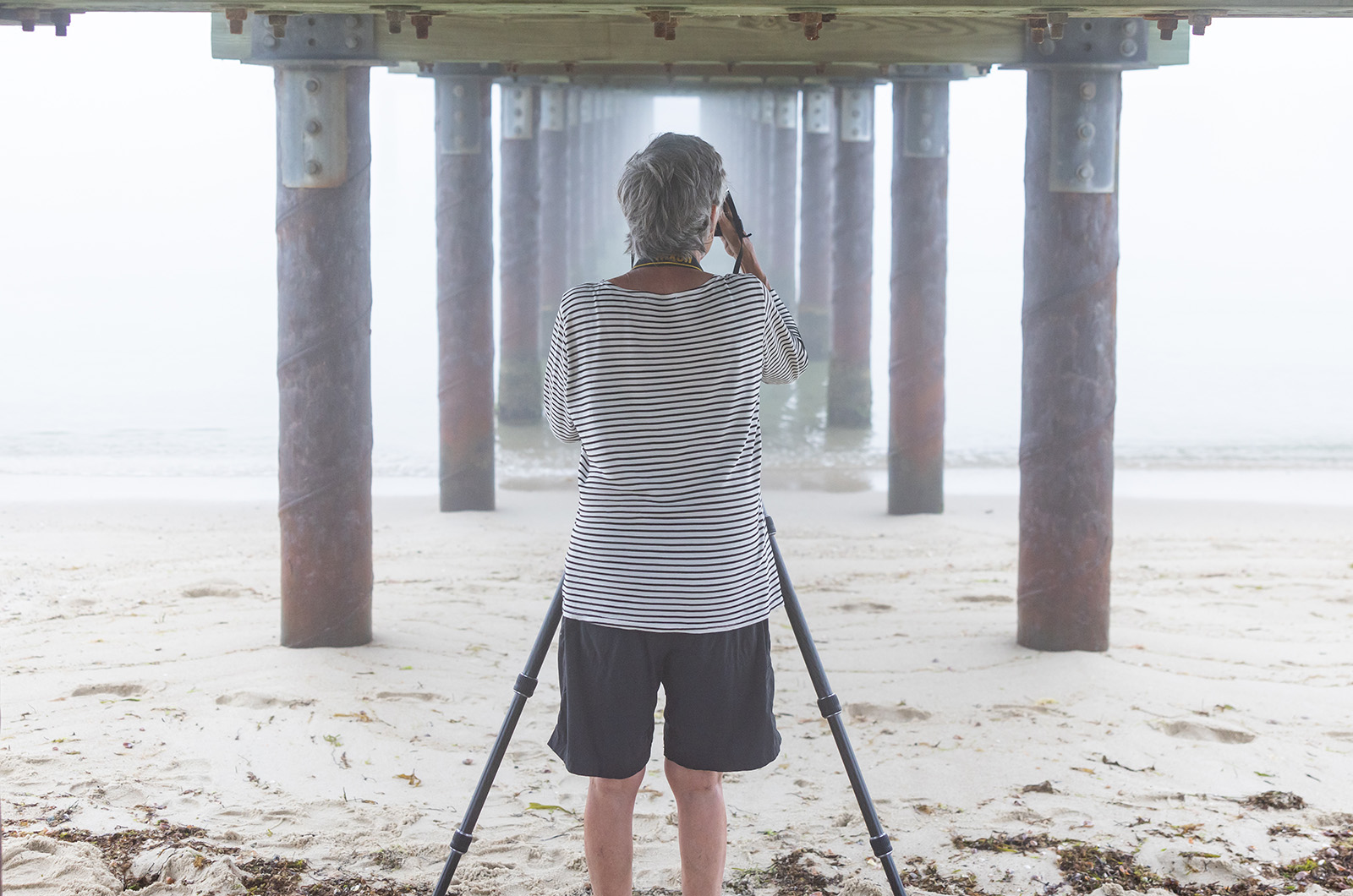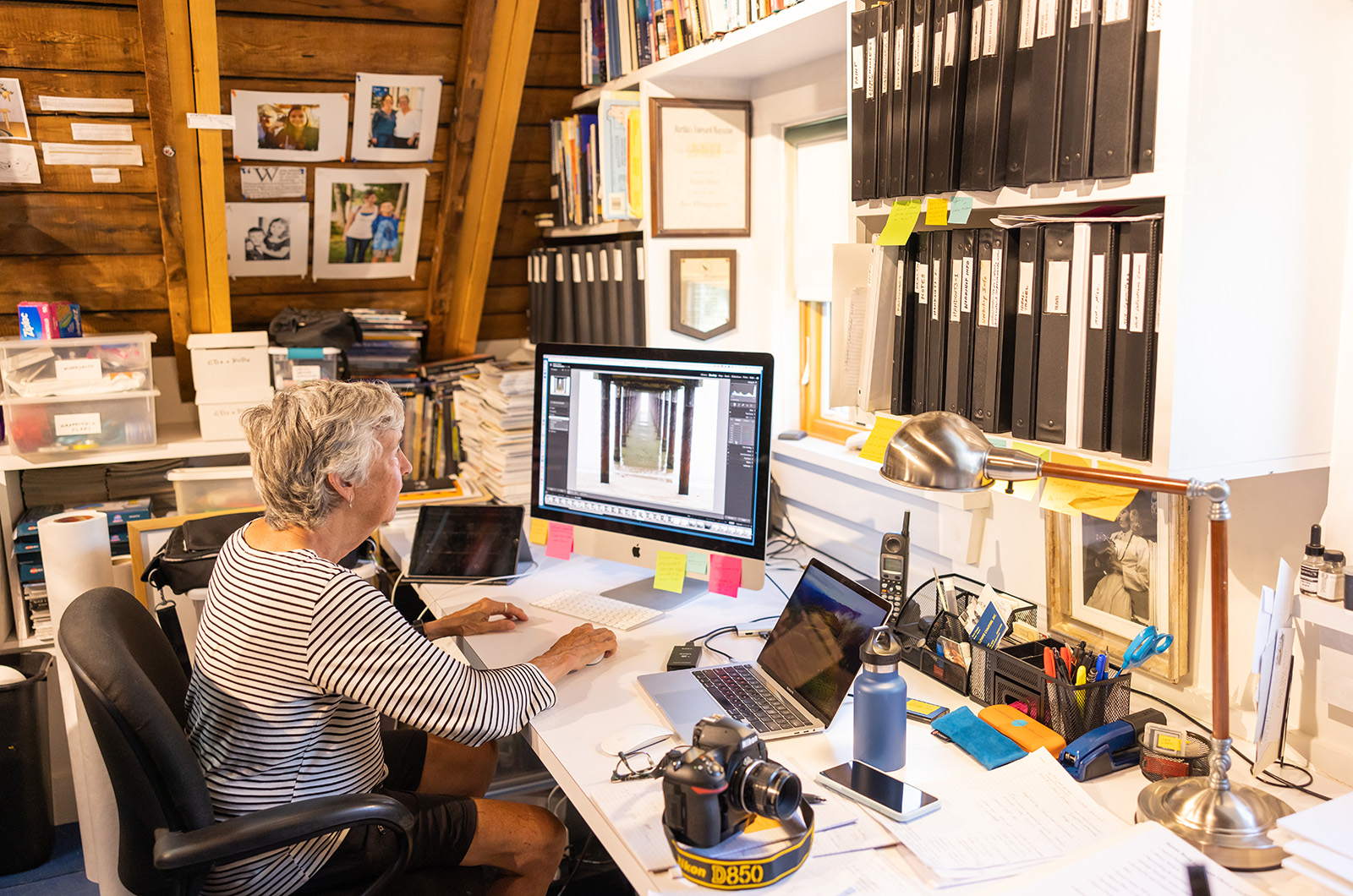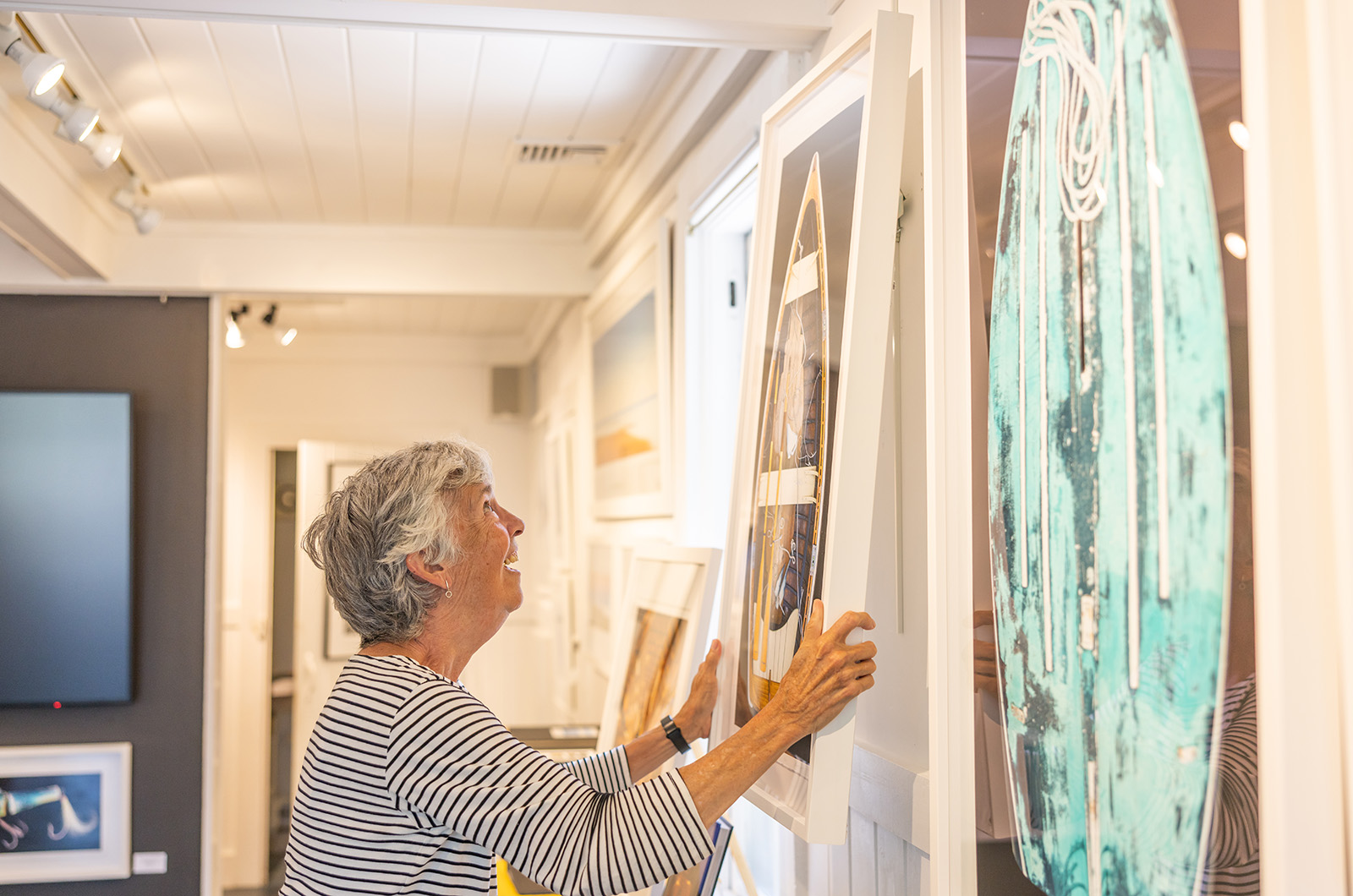Alison Shaw stands in the fog beneath the Oak Bluffs fishing pier. Her camera is positioned on a tripod as she looks through the lens at the early morning waves meeting the shoreline.
She moves a few inches closer to the waves and takes a few shots, adjusting her camera’s settings so the photos are exposed to her liking. A cormorant swims close the pylons. She keeps an eye on the bird, waiting for it to float into frame. When not looking through the lens, Ms. Shaw watches the weather report. She keeps track of fog and storms, anticipating anything that may shift or simplify the landscape of the Island. She likes to seek out the Island’s less iconic beauty, such as the sand after a high tide before it is indented with footprints or the vibrancy of a boat’s hull reflected on the water.
“My favorite things on the Vineyard to photograph are really humble,” Ms. Shaw says. “I have very few pictures of the Gay Head Cliffs or the bandstand in Ocean Park or Main street Edgartown. I’m drawn to the mostly coastal, kind of fringe . . . . I like taking humble subjects and elevating them.”
Her goal, she says, is to continue experiencing the Vineyard from a unique perspective, even after living on the Island year-round since 1975.
“The Vineyard is basically 100 square miles. If I lived on the mainland, I could go farther if I got bored with what was in whatever town. Let me go to the next town and see what’s over there,” she says. “Having the limitations has forced me to go deeper . . . exploring the Island in new ways because as an artist, you got the same material.”
Ms. Shaw grew up visiting her grandparents on the Island each summer. After graduating from college, she moved to the Vineyard and began working at the historical society, now the Martha’s Vineyard Museum, and the Vineyard Gazette, starting as an inserter, putting sections of the newspaper together, and later as the director of graphics and design.
During that time, she also worked as a freelance photographer for the Gazette.
Although Ms. Shaw had not studied photography in a formal capacity, she was not new to the art. Her mother was a professional photographer.
“She was a housewife in the days when women got married, they had kids and ran a household and that was it, but she still did family photography. She never worked professionally again as a photographer, but she’s the one who introduced me to the darkroom, showed me how to print pictures.”
Currently, Ms. Shaw co-owns Alison Shaw Photography with her wife Sue Dawson.
Ms. Shaw took about 150 pictures during her morning shoot at the fishing pier. Back at her studio, located on the second floor of her Oak Bluffs gallery, she culls the series of photographs at a large desktop computer. To one side of the computer hangs a black and white image of Ms. Shaw’s mother holding a camera. The shelf behind the computer holds a Leica camera, a gift from Ms. Shaw’s father, given to her when she was a teenager.
“Something that I love is when people look at one of my pictures and say, ‘Man, how did you get that?’” Ms. Shaw says.
One photo that elicited such a reaction was of a red boat floating in the Edgartown harbor on a clear summer day.
“Someone came up to me in the gallery and said, ‘I’ve never seen that before. Do you exaggerate the color?’”
She told the person where she had taken the photograph and gave her some advice.
“Just stop and really, really look at it and look at the reflection.”
Ms. Shaw recalled running into the person a few months later. She still remembered the photo.
“She was like, ‘I saw it! I saw it!’ You know, it’s there all along.”
Finding a new approach to the more iconic images of the Island is also part of Ms. Shaw’s process. In Menemsha, while most people are watching the sunset, she found inspiration looking in the other direction.
“One time I thought, that’s the most amazing sunset I’ve ever seen,” Ms. Shaw says. “I turned around and looked in the other direction and it was the reflections off the windows of the fishing boat and off the water.”
She imparts her skill of looking to her students through workshops and mentorships throughout the year, taking them to various locations around the Island and encouraging them to leave their cameras in their cars. Ms. Shaw and her students will then spend half an hour just walking and looking.
“Otherwise they’ll photograph the first buoy that they see, rather than the best buoy there,” Ms. Shaw says. “You have to look at all 250 buoys to figure out which one to photograph.”










Comments (8)
Comments
Comment policy »